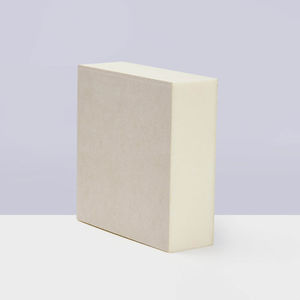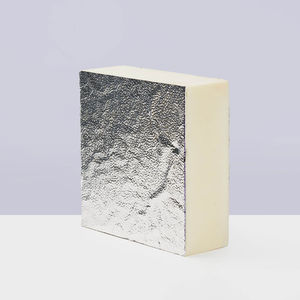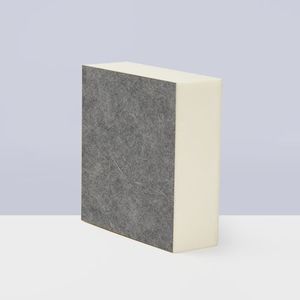
- Company
- Products
- Catalogs
- News & Trends
- Exhibitions
Thermal insulation PIR Board Without Coatingpolyisocyanurate (PIR) foamfoaminterior



Add to favorites
Compare this product
Characteristics
- Type
- thermal
- Material
- polyisocyanurate (PIR) foam
- Format
- foam
- Location
- interior
- Use
- wall
- Technical characteristics
- fire-resistant, waterproof, high-density, fireproof
- Options
- without vapor barrier, sustainable
- Thermal conductivity
0.022 W/(m.K)
- Length
1,200 mm
(47 in)- Width
600 mm
(24 in)
Description
Rectangular pieces of PIR without coatings.
Thermal conductivity coefficient: 0.022 W / M * k.
* Dimensions: 600x1200mm
* Core material: PIR Premier
* Coating: Without
* Thermal conductivity: k=0,022 W/m*k
* Water absorption: < 2%
Durability of PIR boards
The durability of a product is the ability of a product to maintain its properties for a given time under certain operating conditions.
The durability of the thermal insulation material largely affects the cost of operating the building, after all, a significant part of the cost is spent on heating and air conditioning. If over time the thermal insulation layer loses its operational characteristics and heat loss through the enclosing structures increases, this will lead to an increase in the cost of energy consumed.
Also, repair or partial replacement of the thermal insulation layer before the end of its service life will lead to additional costs, since access to the insulation layer is often difficult.
The durability of the PIR board must be ensured by stability during aging of the following
characteristics:
-thermal conductivity;
-compressive strength;
-water absorption;
-size stability.
The estimated service life of polyisocyanurate foam boards is from 30 to 80 years, depending on from the place of use and operating conditions.
MOQ is 300 sq.m.
Catalogs
Related Searches
- Insulation
- Panel insulation
- Thermal insulation
- Synthetic insulation
- Wall-mounted insulation
- Fire-resistant insulation
- Roof insulation
- Interior insulation
- Flooring insulation
- Sustainable insulation
- Ceiling insulation
- Waterproof insulation
- Floor insulation
- Fireproof insulation
- High-density insulation
- Polyisocyanurate (PIR) foam insulation
- Foam insulation
- Granular insulation
*Prices are pre-tax. They exclude delivery charges and customs duties and do not include additional charges for installation or activation options. Prices are indicative only and may vary by country, with changes to the cost of raw materials and exchange rates.







